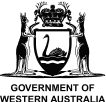Westport has partnered with the Western Australian Marine Science Institution (WAMSI) to deliver the $13.5 million WAMSI-Westport Marine Science Program. This 3-year program is developing the latest data, information and modelling on the complex environmental systems and community values associated with Cockburn Sound.
4.2.2 Zooplankton in Cockburn Sound (Ichthyoplankton); description of larval assemblage and dispersal modelling of key fishery species
Research theme: Fisheries and Aquatic Resources
Researchers: Principal: A/Professor J. McIlwai. Co-Investigators: J. Nilsen, I. Janekovic, D. Johnston, D. Yeoh. (2025)
Investigating the biomass, distribution and seasonal variability of ichthyoplankton in Cockburn Sound
Zooplankton are marine animals that float in the water and include everything from fish larvae (ichthyoplankton) through to copepods (small crustaceans) and jellyfish.
Zooplankton, including ichthyoplankton (eggs and larvae), are a key food source for fish species including pink snapper and blue swimmer crabs
This study looked to provide new insights into the annual cycle of zooplankton, in particular that of ichthyoplankton (eggs and larvae), including seasonal variability, and develop a larval dispersal model for key fish species.
Monthly and fortnightly surveys were conducted at 15 stations for 24 months from September 2021 to August 2023 at locations right across Cockburn Sound, and a light trapping program was also undertaken. Data was collected on the abundance of all larva for all key fish species.
How Westport will use this report
Westport will use this research to inform environmental ecosystem modelling, which will underpin environmental management strategies during the port development, to support the long term health of Cockburn Sound.





